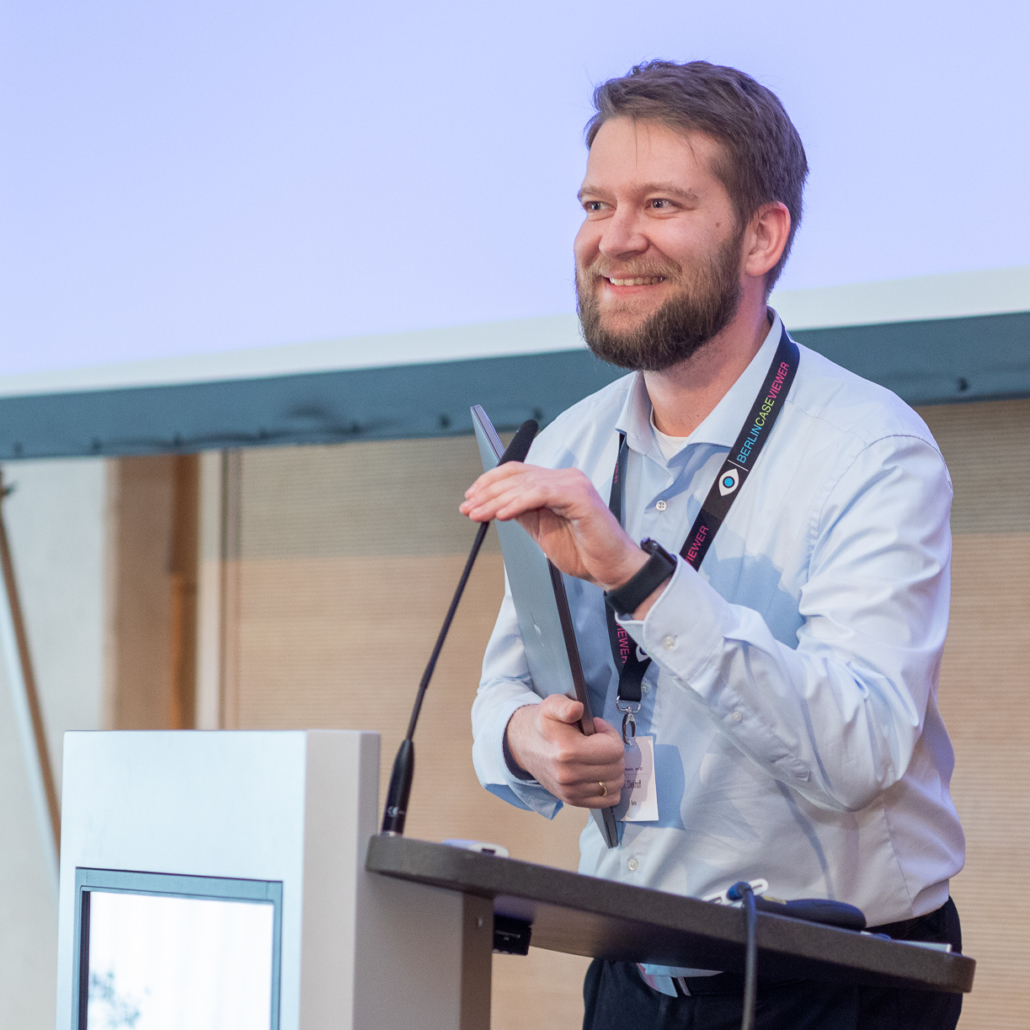
On March 24, 2023, the German Society for Musculoskeletal Radiology (DGMSR) hosted the first Rheuma-Day in Berlin. The hands-on workshop, especially for radiologists, focussed on rheumatic diseases with primarily peripheral manifestations (rheumatoid arthritis, psoriatic arthritis, gout and other crystal arthropathies such as CPPD or HADD) and with axial manifestations (spondyloarthritides, excess strain on the spine and sacroiliac joints and SAPHO syndrome).
Under the scientific direction of radiologist Kay G. Hermann, a program was created that made the most important aspects of imaging of these diseases tangible. With more than 90 participants, the conference room in the Hotel Aquino was packed.

At the start of the event, the radiologist and first chairman of the DGMSR, Karl-Friedrich Kreitner, introduced the topic and then introduced the speakers.

Torsten Diekhoff from the Charité — Berlin University of Medicine focused on arthritis diagnostics using CT and MRI. In addition, the radiologist juxtaposed the SAPHO syndrome, a rare rheumatic disease, with axial spondyloarthritis and psoriatic arthritis of the spine.

Crystal arthropathies such as gout, CPPD and HADD were at the core of Katharina Ziegeler’s morning lecture. In her presentation in the afternoon, the radiologist, also from the Charité — Berlin University of Medicine, referred to gender-specific differences in imaging of the sacroiliac joints, which must be taken into account when diagnosing pain syndromes of the lower spine.

Crystal arthropathies such as gout, CPPD and HADD were at the core of Katharina Ziegeler’s morning lecture. In her presentation in the afternoon, the radiologist, also from the Charité — Berlin University of Medicine, referred to gender-specific differences in imaging of the sacroiliac joints, which must be taken into account when diagnosing pain syndromes of the lower spine.

As a clinical partner, Denis Poddubnyy emphasized the importance of an interdisciplinary approach in the diagnosis of rheumatic diseases and discussed how radiology colleagues enriched his department. As a practical example, he used the diagnosis and clinical aspects of axial spondyloarthritis.

With his introductory lectures, the radiologist Kay G. Hermann laid the basis for understanding joint inflammation and its various manifestations — both in the axial skeleton and in the peripheral joints.
Over the course of the day, presentations and case discussions had been alternating. Two conference halls were available for the practical part, enabling the participants to engage better in conversation with the experts while interactively analyzing cases to delve deeper into the topics.
It was up to the participants whether they used the iPads provided or their own devices to download and analyze the cases. For anyone interested in working on the didactically edited cases even after the event, a temporary learning module had been prepared for download in the BerlinCaseViewer app.
One case in particular caught the participants’ interest: that of a 45-year-old female patient who complained of severe back and neck pain in the cervical spine. How would you have solved the case? Here you can study the example at your own pace:
An urgent MRI scan was arranged and showed a clear prevertebral, inflammatory soft tissue process. On closer inspection, a calcium deposit in front of the dens axis could already be seen in the MRI. The ordered X-ray and CT examinations confirmed the faint calcification.
Ultimately, it was a calcium deposit that had formed at the base of the longus colli muscle. This muscle runs between the first cervical vertebra, the atlas (C1), and the third thoracic vertebra (T3). Calcifications of the enthesis are rare here, but can appear like an abscess anterior to the spine. Painkillers such as NSAIDs and, in persistent cases, transoral punctures or operations to remove the calcium deposits can be used therapeutically.
During breaks, the conversations continued about the various rheumatic diseases, their clinical appearance, and various diagnostic options. In addition to the exchange among each other, there was also the opportunity to get in touch with the representatives of the sponsors Novartis Pharma GmbH and Bayer Pharma AG.
The positive feedback was mainly due to the hands-on approach of the workshops during the event. The remaining question came down to this: When will the next Rheuma-Day take place? Be the first to know and subscribe to our newsletter below.
Stay Updated and subscribe to our Newsletter.
Signup for news and special offers!
You can unsubscribe anytime. For more details, review our Privacy Policy.